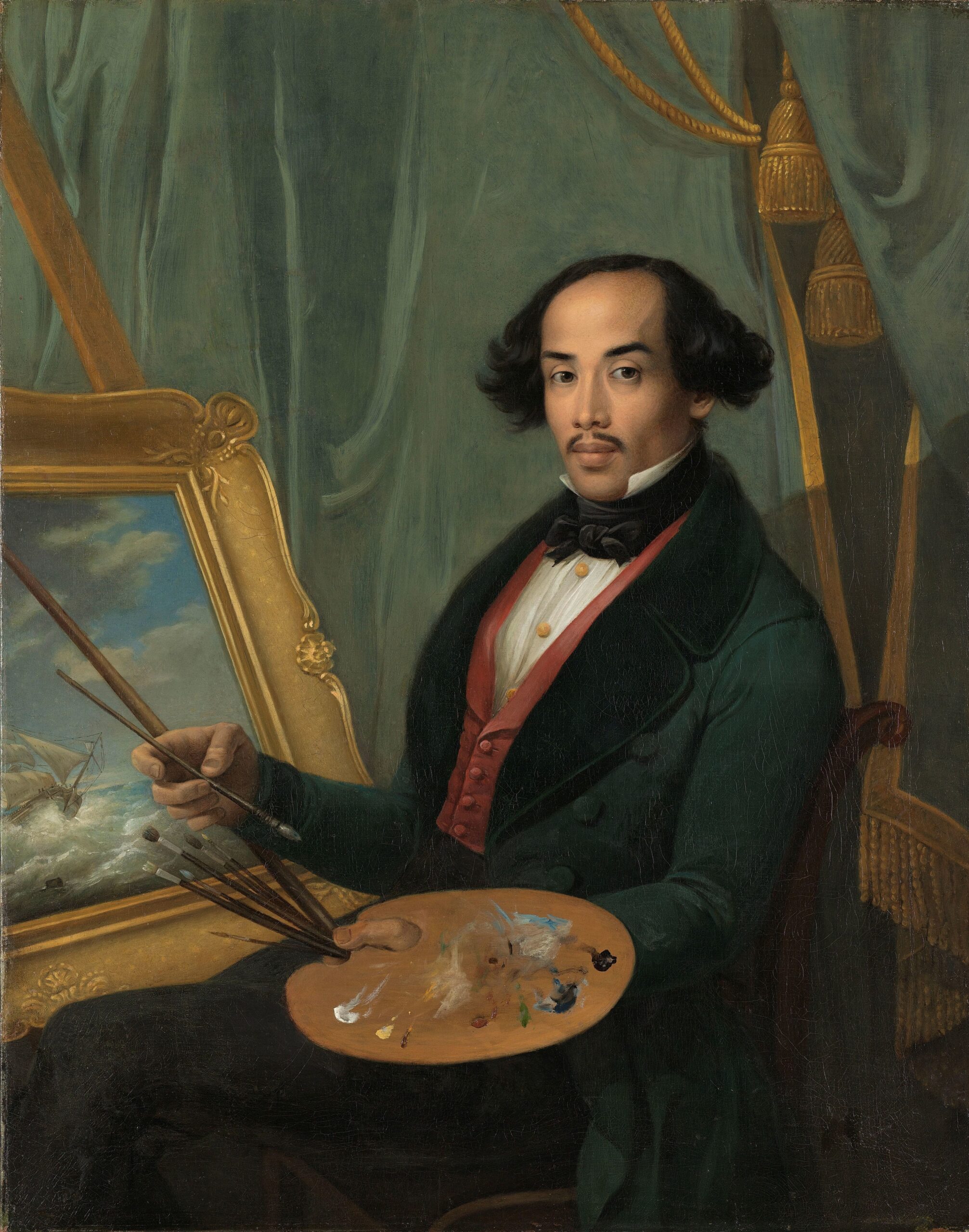Robin Goudsmit – Whiteness: My Manual
Eighteen young authors have brought nineteenth-century artefacts from the Rijksmuseum to life. They have taken inspiration from the question: what do you see when you look at these objects with an eye for invisible labour? Robin Goudsmit wrote a manual to accompany Portrait of Raden Syarif Bustaman Saleh, which is attributed to Friedrich Carl Albert Schreuel and was made c. 1840. ‘You asked, so let me explain it to you.’
 Portrait of Raden Syarif Bustaman Saleh, attributed to Friedrich Carl Albert Schreuel, c. 1840.
Portrait of Raden Syarif Bustaman Saleh, attributed to Friedrich Carl Albert Schreuel, c. 1840.© Rijksmuseum Collection, Amsterdam
Whiteness: My Manual
You asked, so let me explain it to you. A brown man doesn’t simply turn white. It takes time and energy. It’s a costly, precarious process. You’ll need the following: firstly, something to coax that straight Asian hair down to the shoulders in an elegant wave. Secondly: a mirror in which to practise a self-assured gaze. Becoming white requires practice, something to do with posture.
Next, it calls for a certain way of talking. Any idea how much practice it takes to get your head around Dutch intonation? Not to mention the pronouns. I know people who are still struggling after half a century. And getting your grammatical genders all mixed up is lethal.
Becoming white requires money. Double-breasted velvet jackets are expensive, as are silk scarves to tie around your neck. That’s because they’re more than just objects, they’re talismans. They hide the brown. They make it fade. All the untrained viewer sees is white. I don’t see colour, least of all yours, he’ll say. Where did you say you were from?
To begin with you need to know what whiteness is. You need to study it, the way some go birdwatching, with binoculars. Or the way others, armed with a camera, go in search of the big five. Don’t give yourself away by being too noisy, by being too present. For a man with brown skin it shouldn’t be too difficult, studying whiteness. The American author James Baldwin was aware of this: knowing whiteness is a task that the non-white man undertakes out of self-preservation.
But be careful not to overdo it. A full beard may not be feasible. Stick to a small moustache. One you can curl around your fingers, as you look closely at the seascape with VOC ship that is beginning to take shape on your canvas. A seascape with a ship from the Dutch East India Company. It’s so ironic it must be a joke. Did it elicit a mild chuckle under that moustache?
But be warned: becoming white is a thankless task. Once you’ve successfully completed the aforementioned steps, some people will still question the makeover accomplished here. A chameleon can change colour, but never fully become what it doesn’t want to stand out from.
You’ll probably find that this manual doesn’t take you where you want to go. I’m sorry. I’m also sorry if the alternative, going back to who you were, has become all but impossible. The world has changed irrevocably; you’ve become a violently constructed hybrid.
All the colours on the palette have been mixed up. Maybe later, in an as yet unimaginable life, other colours will emerge. Perhaps something more bearable will form. A coat that fits a little better.












